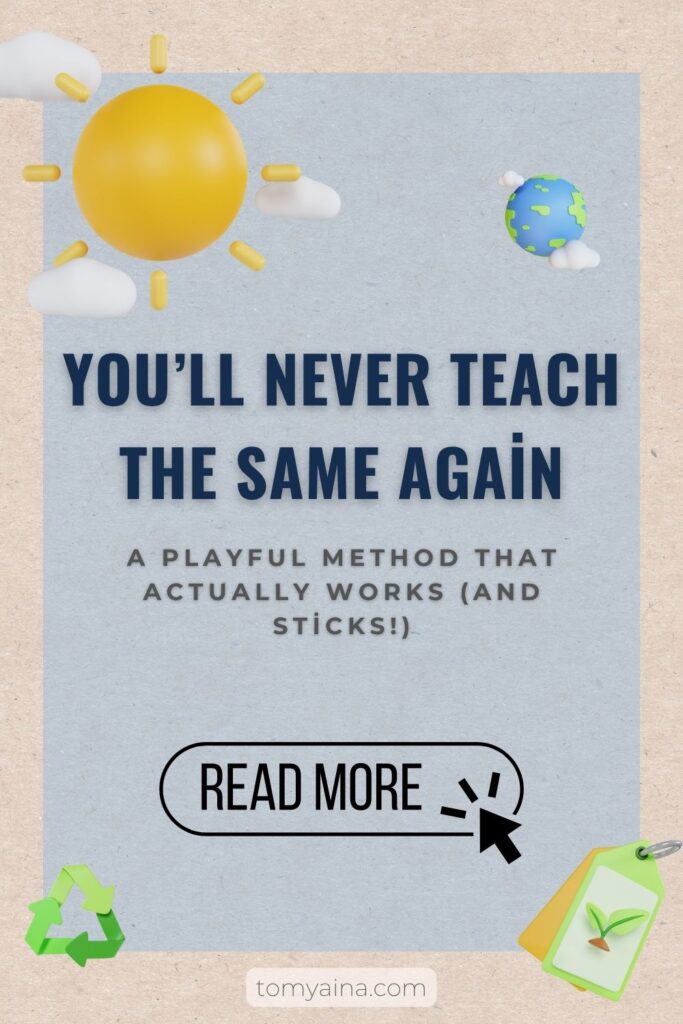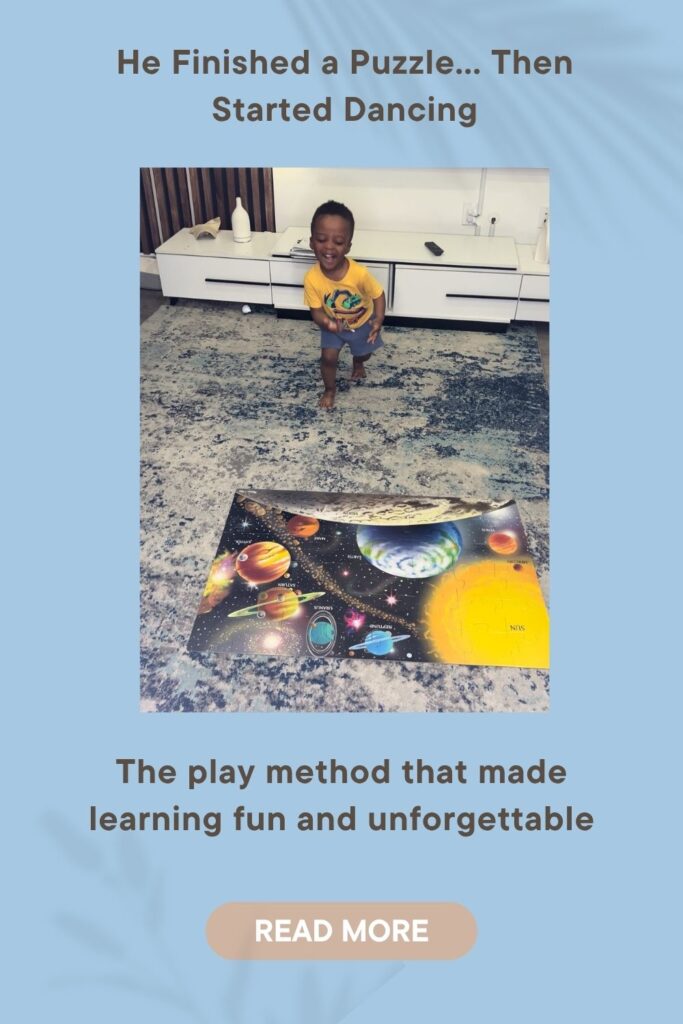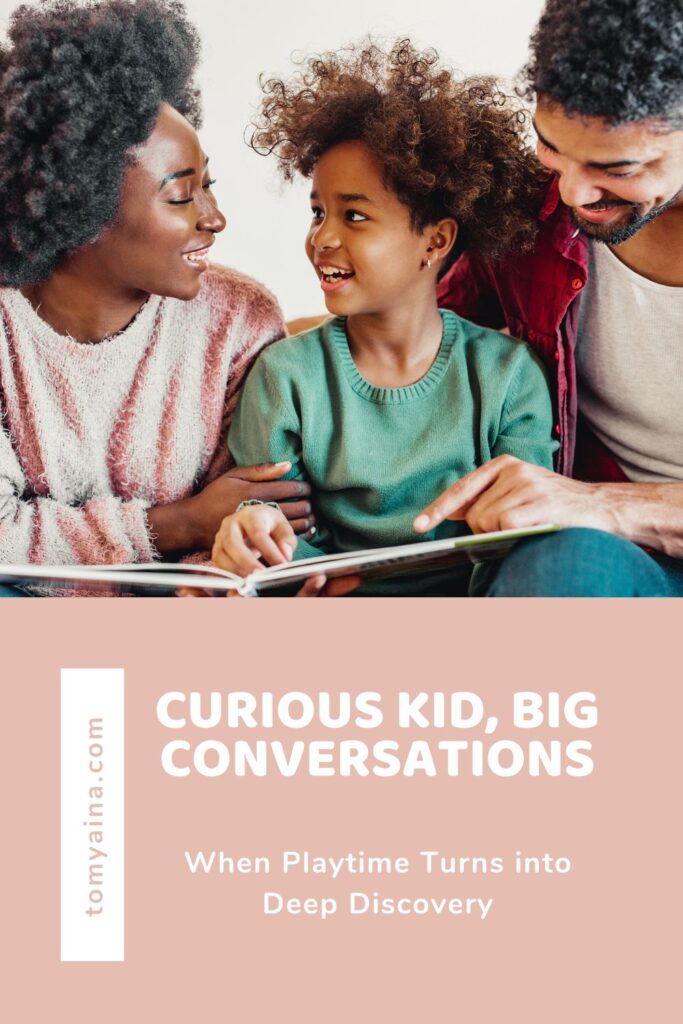You know those printable toddler binders with name tracing, shapes, colors, all the good stuff?

Well, one day, we got to the planet page in Ari’s binder.
It was adorable.
And… a bit of work. I had to:
- Print the planet shapes
- Laminate them
- Cut each one out (shoutout to Ari’s aunties!)
- And add Velcro dots on the back so he could stick and re-stick them easily
When we finally sat down with it, Ari didn’t know what planets were, but he LOVED the activity.
He matched planets by size, made rows and clusters, and kept going back to that page again and again.
💡 That was a lightbulb moment. He didn’t “get it” yet, but the joy meant something was clicking.
That one Velcro page sparked something.
From there, he became fully obsessed with planets, space, science… and somehow, I had accidentally discovered a learning method we now use for everything.
Introducing the ENJOY Method
A flexible, joyful rhythm for learning through play in early childhood.
No pressure. No printables required (unless you want to 😉).
It stands for:
Explore. Name it. Jump in. Observe. Your turn.
Here’s how it unfolded through our space story:
E – Explore
Start with something hands-on and open-ended.
For us, it was that binder page. No explanations. No agenda.
Just colorful planets and Velcro dots.
Ari didn’t understand orbits or moons — but he loved sticking those planets down. And that joy was the first layer of learning.
N – Name It
Once he was engaged, I introduced words to what he was doing.
We flipped through a planet picture book. I said the names slowly.
He didn’t memorize anything, but now he had words for what he was exploring.
J – Jump In
Now we made it fun and repetitive.
- We danced to the Hopscotch planet song. I love this song, I actually jam to it!
- He got a planet puzzle thanks to his aunt, a planet board (with flashcards ) — and that was the game changer. (Peep him dancing after working on this puzzle)

- We added space videos to screen time, I dare to say he learnt facts from this.
Suddenly, Ari was talking about dwarf planets, orbits, and yes black holes.
I was like, “Okay, wait… Stephen Hawking… something something gravity?”
That’s when I knew: he was learning deeply.
O – Observe and Open Conversation
I started asking questions and letting him lead.
Which planet has the rings again?
Why do we have a moon?
What is the windiest planet?
Sometimes we Googled things together and found out facts.
Sometimes he even corrected me when I mispronounced the planet names. I mean one of the dwarf planets is called Makemake. I confidently said “Make-Make” and he just looked at me like, “No mama… it’s Mah-kay Mah-kay.”
Excuse me, Professor Ari. 😅

Y – Your Turn
Now came the best part — when Ari took over.
- Built his own solar system out of pillows
- Lined them up by size
- Used planets to solve math
He wasn’t just absorbing information.
He was creating, connecting, and expressing.
That’s what learning through play in early childhood is all about.
Why ENJOY Works
I didn’t plan it.
I just followed his curiosity.
And that’s the beauty of this method, it works because it’s:
- Rooted in connection, not performance
- Designed for real life (hello snack breaks and screen time)
- Flexible enough to follow your child’s lead
- Effective for child development activities
- Open to all kinds of learning, including faith-based moments
Sometimes, after a fun activity or story, we sit quietly and reflect.
God really made the planets and the galaxies… God is truly amazing!
Try It to Teach:
- Bible stories – Noah’s Ark, Jesus healing, parables. You can check out 3 bible stories you can teach your kids here
- Science – Planets, weather, animals, the human body
- Habits – Brushing teeth, helping, kindness
- Emotions – Joy, sadness, fear, courage
- Early skills – Counting, letters, matching, rhyming
If it matters to your child, it can be taught through play.
And trust me, you’re probably already doing it.
Final Thought
I didn’t invent this method.
My son led me to it.
So if you’re wondering how to teach your toddler without pressure or overwhelm, try this:
Explore. Name it. Jump in. Observe. Your turn.
Because learning through play in early childhood doesn’t require perfection.
It just needs presence.
And that’s something you already have.

I LOVE learning about human psychology! Thank you, Ari, for teaching us how to teach our kids. Priceless!